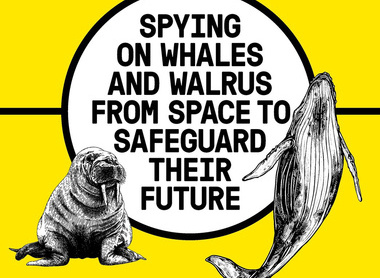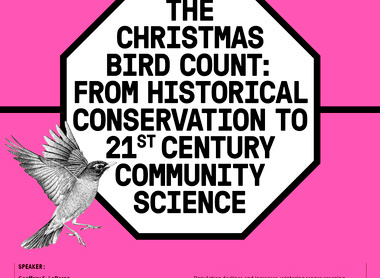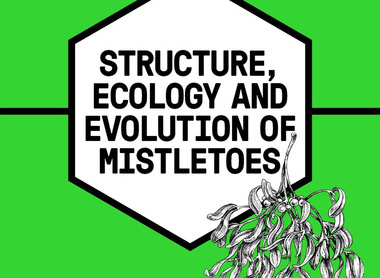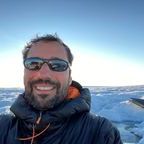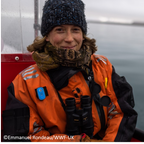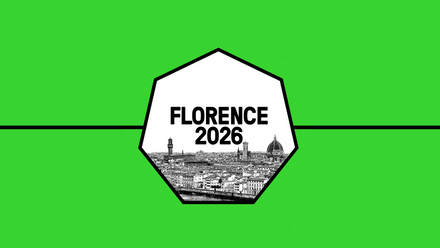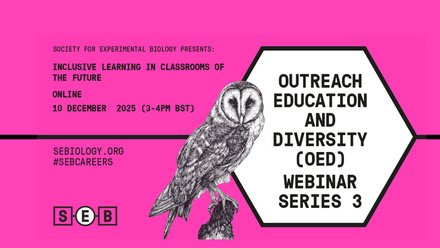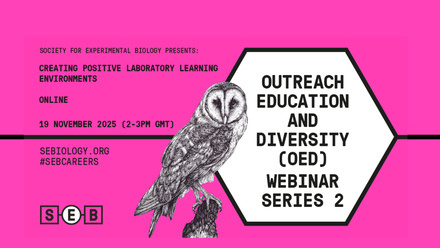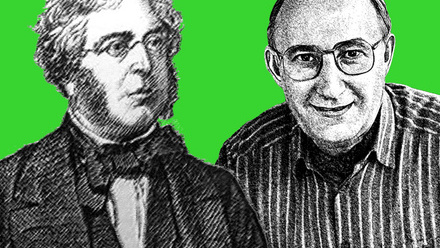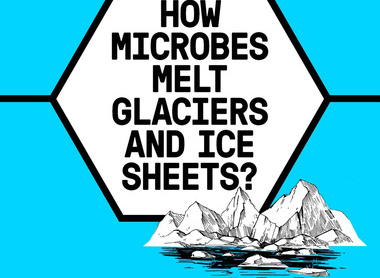
Book your place now for the SEB Christmas Lectures 2022

It aims to offer broad interest talks within the four interest areas of the SEB - cell; animal; outreach, education and diversity (OED); and plants - that will engage all our members and interested parties, no matter their background or career level.
Format: 30-minute talk followed by an audience Q&A session.
Price: free to attend and open to the public.
Booking: You'll have the option to choose which of the lectures you would like to attend. You can book multiple lectures at once.
Monday, 12 December 2022 1 pm - 2 pm (UK time)
How microbes melt glaciers and ice sheets?

Glaciers and ice sheets were long believed to be sterile environments, but just like other large ecosystems (e.g., tropical forests, tundra), they are now widely recognized as one of the Earth’s biomes, teeming with life. This biome is also the most under-investigated on the planet from a biological and biogeochemical perspective, representing a new and exciting frontier in science. Home to large, naturally occurring communities of mostly microbes, glaciers and ice sheets host metabolically active organisms, interacting with each other. These processes represent more than just a minor curiosity of life under extreme conditions. On glacier and ice sheet surfaces, microbes have been shown to alter physical and chemical characteristics of snow and ice with direct consequences for snow/ice solar-heating and amplified melt. During the summer ablation, the bare ice is largely dark, as it is colonized by pigmented ice algae. Biological growth of icebound algal cells can accumulate biomass high enough to cause albedo reduction between 12% and 21%, depending on the algal cell abundances. The impact of microbially-mediated albedo effect is predicted to increase further with climate change, since a warming climate will further extend melt seasons. Furthermore, microbial activity and carbon fixation on ice surfaces can result in export of labile dissolved organic matter to downstream ecosystems.
Tuesday, 13 December 2022 1 pm - 2 pm (UK time)
Spying on whales and walrus from space to safeguard their future

Some satellites orbiting our Planet can capture detailed images of almost anywhere, allowing us to monitor wildlife in remote regions that are difficult to access by boats or plane. At the British Antarctic Survey and with collaborators, we are investigating how very high-resolution satellite images and other space sensor could be used to monitor whales and walrus to fill knowledge gap to support their conservation.
Wednesday, 14 December 2022 2 pm - 3 pm (UK time)
The Christmas Bird Count: From Historical Conservation to 21st Century Citizen Science

Most birders have probably participated on a Christmas Bird Count (or likely many), but it is unlikely that many people realize that, just by counting birds and contributing data in a program like the CBC, that they are, in fact, helping further our understanding of how bird populations are doing on a hemispheric level!
Since its inception on Christmas Day of 1900, Christmas Bird Census (now “Count”) volunteers have been counting birds in specific areas in the Holiday season—and also keeping track of how much time and effort they expend to tally those birds. The CBC is the great granddaddy of what has come to be called Citizen Science—where volunteer citizens partake in an activity and contribute data to a larger program. Scoffed at by many scientists for decades, in recent times the CBC and other large volunteer-generated data sets have become the wave of future investigation for conservation biologists.
Population declines and increases, wintering ranges creeping northward with time, and the patterns of irruptive species over the years can all be studied by investigations using Christmas Bird Count data.
This program will look at the CBC in past, present, and future tenses, including stories—as investigated using the online CBC tool set—about how some species of birds are doing on local, regional, and continental scales.
Thursday, 15 December 2022 1 pm - 2 pm (UK time)
Development of a Christmas tradition: structure, ecology and evolution of mistletoes

Mistletoes are often associated with Christmas decorations, traditional medicine, and damage to horticulture and timber-producing trees. At the same time, these shrubby plants which live as parasites upon the branches of a wide range of trees represent a keystone resource in many urban and natural ecosystems. They are also an instigating puzzle in terms of evolutionary ecology and development. Instead of comprising a single group, the mistletoe lifestyle evolved five times independently within the order Santalales, giving rise to 83 genera and over 1,500 species. This classification offers an opportunity to examine convergence and variation among these parasitic plants, especially considering their unique morphology and physiology. In this context, in this talk I will discuss some of the links between mistletoe diversity and morphogenesis across both developmental and evolutionary times. Aspects of parasite-host interaction and species plasticity will also be addressed, with a special focus on global climate and land-use changes.

